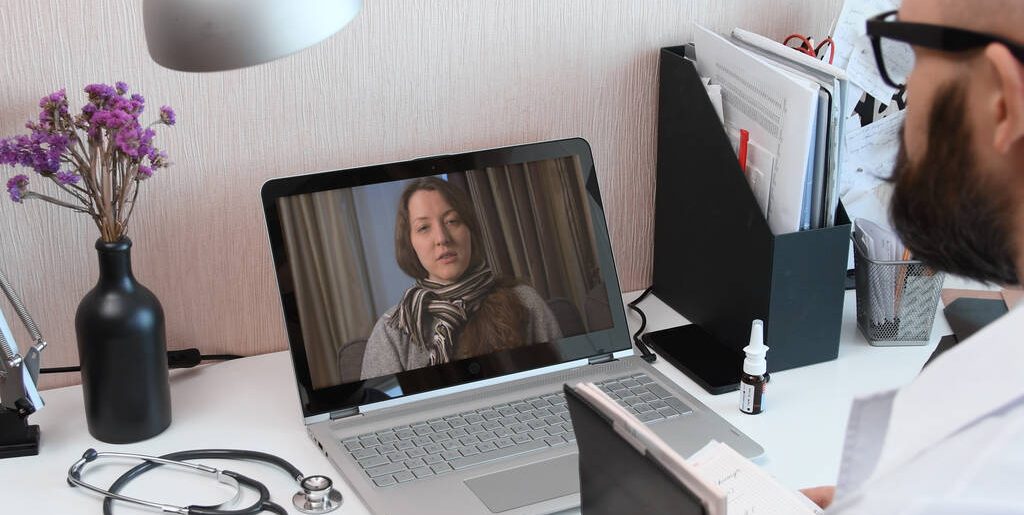Telehealth Post-COVID-19: Its Lasting Impact on the Healthcare Industry

The COVID-19 pandemic has brought about significant changes across various industries, but one of the most profound transformations has occurred in healthcare. As the world grappled with the challenges of social distancing and lockdowns, telehealth emerged as a lifeline for both patients and healthcare providers. Let’s explore how telehealth has not only bridged the gap during the pandemic but is also leaving a lasting imprint on the healthcare industry in this post-COVID-19 era.
The Telehealth Revolution
Telehealth, broadly defined as the use of digital technologies to deliver healthcare services remotely, has been around for several years. However, it was the pandemic that truly pushed it to the forefront. The sudden need for social distancing and the risk of exposure in healthcare settings made it clear that traditional in-person visits were no longer the safest or most convenient option.
Consequently, telehealth saw an unprecedented surge in adoption. Patients embraced virtual consultations as a means to receive medical advice, prescriptions, and even mental health support without leaving the safety of their homes. Healthcare providers, on the other hand, quickly adapted to this new mode of service delivery. The result was a revolution in the way healthcare is accessed and delivered.
The Convenience Factor
One of the most significant impacts of telehealth is the convenience it offers. In the pre-COVID-19 era, scheduling a doctor’s appointment often meant taking time off work, arranging transportation, and spending hours in a waiting room. Telehealth changed this equation. Patients could now connect with healthcare professionals from the comfort of their own homes, reducing travel time and minimizing disruptions to their daily lives.
This newfound convenience is not only a boon for patients but also for healthcare providers. Telehealth allows them to see more patients in a day, reducing the burden of crowded waiting rooms and optimizing their schedules. This efficiency has the potential to improve the overall quality of care, as doctors can allocate more time to each patient, even in a virtual setting.
The Digital Divide
While telehealth offers numerous advantages, it is important to acknowledge the digital divide that exists. Not everyone has equal access to the technology required for telehealth consultations. This disparity in access can disproportionately affect vulnerable populations, potentially exacerbating existing healthcare disparities.
Efforts are being made to bridge this gap, with initiatives to provide technology and internet access to underserved communities. However, it remains a challenge that needs continued attention and investment to ensure equitable access to telehealth services.
Enhancing Mental Health Support
The COVID-19 pandemic brought to light the importance of mental health like never before. Social isolation, economic uncertainties, and the fear of the virus itself took a toll on people’s mental well-being. Telehealth played a crucial role in making mental health support more accessible.
Therapists, counselors, and psychiatrists began offering virtual therapy sessions, allowing individuals to seek help without the stigma or inconvenience often associated with in-person visits. The ability to access mental health services remotely has the potential to destigmatize seeking help for mental health issues and encourage more people to prioritize their mental well-being.
Remote Monitoring and Chronic Disease Management
Beyond consultations, telehealth has opened new avenues for remote monitoring and chronic disease management. Patients with chronic conditions like diabetes, hypertension, and heart disease can now use wearable devices and smartphone apps to track their health metrics and share data with their healthcare providers.
This real-time monitoring allows for proactive intervention, reducing the risk of complications and hospitalizations. Patients also benefit from a greater sense of empowerment and involvement in managing their health.
The Future of Healthcare
As we move forward into a post-COVID-19 world, telehealth is unlikely to revert to its pre-pandemic status. It has become an integral part of the healthcare landscape, offering a range of benefits that cannot be ignored. Telehealth consultations may have been the immediate solution during the crisis, but the concept of remote healthcare delivery has evolved beyond that.
The future of healthcare will likely involve a hybrid model that combines in-person and virtual care with the help of a practice management software. Patients will have the flexibility to choose the mode of consultation that best suits their needs, whether it’s a traditional office visit or a virtual interaction. This flexibility can enhance patient engagement and satisfaction.
Challenges and Regulatory Considerations
While the benefits of telehealth are clear, there are challenges and regulatory considerations that need to be addressed. Privacy and security of patient data remain paramount, and telehealth platforms must adhere to strict standards to protect sensitive medical information. Additionally, reimbursement policies and licensing requirements for healthcare providers practicing across state lines are areas that need ongoing attention.

Telehealth has played a pivotal role in transforming healthcare in the wake of the COVID-19 pandemic. The convenience it offers, the potential to bridge gaps in mental health support, and its role in remote monitoring and chronic disease management make telehealth a vital component of the modern healthcare landscape.
As we navigate the post-COVID-19 world, it is clear that telehealth is here to stay. Its enduring impact on the healthcare industry is a testament to its ability to adapt and provide innovative solutions to meet the evolving needs of patients and healthcare providers alike. However, as we embrace this new era of healthcare delivery, it is essential to address the challenges and regulatory considerations to ensure that telehealth continues to provide safe, efficient, and equitable care for all.
